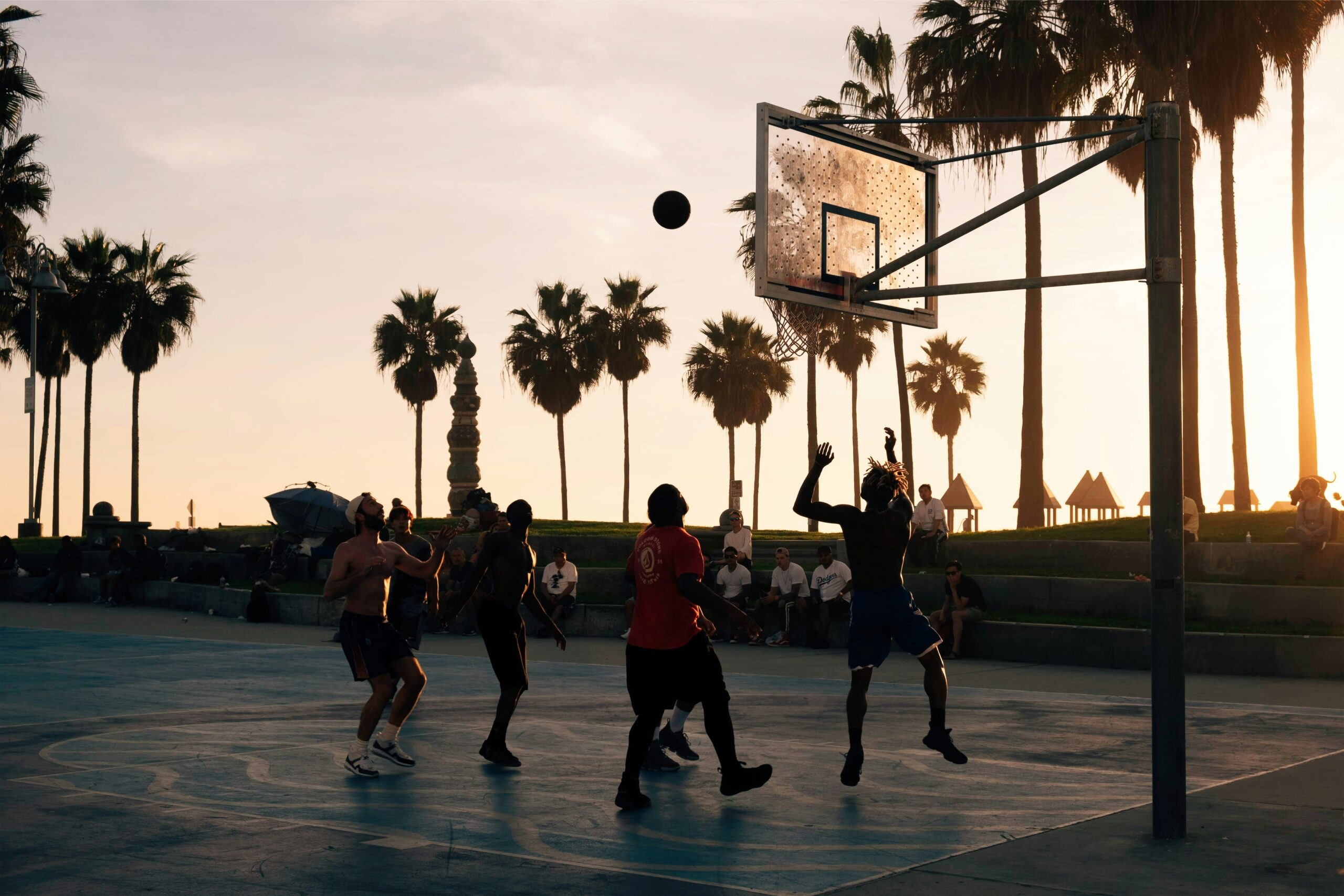Three-on-three half-court basketball drills offer the perfect balance of skill development and game-like situations. These drills teach players spacing, decision-making, and teamwork while maximizing touches and participation for everyone involved. Whether you’re coaching youth players or organizing pickup games, 3-on-3 drills develop basketball IQ faster than traditional full-court scrimmages.
Half-court 3-on-3 formats force players to think quickly, communicate effectively, and execute plays in tight spaces. Players get more opportunities to handle the ball, make decisions, and practice both offensive and defensive concepts. The smaller team size means every player stays engaged and accountable for their performance. These drills work perfectly for teams with limited court space, smaller rosters, or coaches who want to focus on specific skills while maintaining competitive intensity.
Setting Up Effective 3-on-3 Drills
Proper setup determines the success of your 3-on-3 drills. Use half the court from the baseline to half-court line, with one basket for scoring. If you have multiple courts available, run simultaneous games to keep more players active and create competitive energy between groups.
Establish clear boundaries using existing court lines or cones. The three-point line, free-throw lane, and baseline provide natural boundaries that players already understand. Make sure players know what happens when the ball goes out of bounds – typically the defending team gains possession or play stops for a quick restart.
Team composition matters significantly for drill effectiveness. Key considerations include:
- Mix skill levels to create balanced competition
- Rotate teams frequently for varied experiences
- Consider position-based teams for specific matchups
- Mix positions to develop player versatility
Set clear time limits for each game or drill segment. Games lasting 3-5 minutes keep intensity high and allow for multiple rotations. Use a scoreboard or simple point system to track progress and maintain competitive spirit throughout the session.
Essential 3-on-3 Drill Variations
The basic 3-on-3 game starts with one team on offense and the other on defense. Play begins with a check at the top of the key, and teams play until someone scores or the defense gains possession. After each score, possession changes to the other team. This format teaches transition offense and defense while keeping the game flowing.
Live ball 3-on-3 creates more realistic game situations. When the defense gets a rebound or steal, they immediately become the offensive team without stopping play. This variation develops fast-break opportunities and forces players to think quickly about changing roles from offense to defense.
Winners stay drills keep successful teams on the court while losing teams rotate off. This format motivates players to compete hard and rewards good execution. New teams enter as challengers, creating fresh matchups and maintaining energy levels throughout practice.
Make-it take-it rules award possession to the team that scores, similar to playground basketball. This variation emphasizes finishing plays and defensive stops since teams can build momentum through consecutive scores. It also teaches players to value each possession and execute carefully.
Specific skill-focused variations target particular areas of development:
- Games requiring a certain number of passes before shooting
- Drills emphasizing specific plays or movements
- Constraints that force practice of particular skills
- Variations that maintain game-like pressure while teaching
Coaching Points and Teaching Opportunities
Spacing becomes critical in 3-on-3 formats since players have more room to operate but must use it wisely. Teach players to maintain proper distance from teammates to create driving lanes and passing angles. Emphasize moving without the ball to create open looks and keep the defense honest.
Communication increases in importance with fewer players on the court. Each player must talk constantly about screens, switches, and help defense. Encourage players to call out defensive assignments and offensive plays clearly since there’s less margin for error with smaller teams.
Decision-making skills improve rapidly in 3-on-3 settings because players handle the ball more frequently. Focus on reading the defense and making quick choices about when to shoot, pass, or drive. Teach players to recognize numerical advantages and exploit defensive breakdowns immediately.
Defensive concepts like help and recovery, switching on screens, and closeout techniques become more apparent in 3-on-3 drills. With fewer defenders, each player must understand their responsibilities and execute properly. Use these drills to teach defensive communication and positioning without the confusion of five-player defenses.
Rebounding takes on added significance since fewer players compete for each rebound. Emphasize boxing out techniques and going hard to the glass on both ends. Teach players to anticipate shot angles and position themselves for rebounds before the ball is released.
Common Mistakes and Solutions
Many coaches make games too long, causing players to lose intensity and focus. Keep games short and rotate teams frequently to maintain competitive energy. Players perform better in brief, high-intensity segments than extended periods of moderate effort.
Other common issues to avoid:
- Unbalanced teams that create frustration
- Inconsistent rule enforcement leading to confusion
- Focusing too much on winning over skill development
- Poor spacing and limited ball movement
Conclusion
Three-on-three half-court basketball drills provide excellent opportunities for skill development, team building, and competitive play. These drills maximize player involvement while teaching essential basketball concepts in game-like situations. The smaller format allows coaches to focus on specific skills while maintaining the excitement and intensity that keeps players engaged.
Start with basic 3-on-3 games and gradually add variations that target your team’s specific needs. Focus on proper spacing, communication, and decision-making while keeping the competitive spirit alive. With consistent practice and proper coaching, these drills will improve your players’ basketball IQ and overall performance significantly.
Looking to take your team’s development to the next level? Athletes Untapped connects coaches and players with experienced basketball trainers who specialize in small-group instruction and skill development. Explore basketball training options to enhance your team’s progress.




